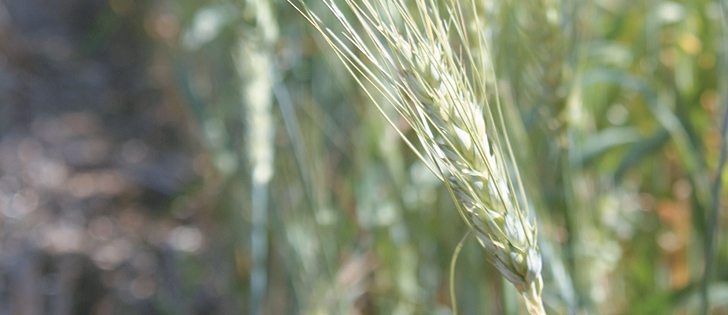Saskatchewan farmers will face the usual assortment of insect threats this year, but only a few are forecast to cause significant damage.
Brent Flaten, the province’s integrated pest management specialist, told the Saskatchewan Soil Conservation Association annual conference which pests to watch out for and where.
Forecast maps are posted on the Saskatchewan Agriculture website.
GRASSHOPPERS
Based on fall 2009 adult counts at 1,200 locations, grasshoppers will be a significant threat this year. The population has increased in most areas, Flaten said.
Read Also

Drones now used to assess wildlife crop damage in Saskatchewan
Wildlife damage in Saskatchewan crops is now assessed by drones and artificial intelligence.
The economic threshold for spraying grasshoppers varies by crop. For cereals, eight to 12 grasshoppers per sq. metre warrant application, but for flax and lentils, the number is two. Flaten said flax and lentils suffer the most damage at blossoming and early podding stages.
He added that research looks promising on the use of the biological control metarhizium.
WIREWORMS, CUTWORMS
Since Lindane was taken off the market, there haven’t been any products available to control wireworms, Flaten said.
The larvae of click beetles causes damage early in the season before producers even notice them.
The seed treatment Cruiser Maxx can be used in cereal crops but won’t eliminate the worms.
“It’s only suppression at low populations.”
Cutworms also show up early, usually on south-facing slopes.
Forecasting the population is difficult but he expects that both the below ground and foliar-feeding species will cause problems.
Most prevalent are the pale western cutworms on the west side of the province and the redbacked cutworms in the east. Army and dingy cutworms are foliar feeders.
Last year, glassy cutworms showed up for the first time.
WHEAT MIDGE
The wheat midge population is on a downward trend but there are areas in the northwest that are high risk.
They include northwest of Saskatoon to North Battleford and toward Lloydminster. Another is located southeast of Prince Albert.
Flaten noted that producers now have the option of growing midge tolerant wheat.
AC Unity VB and AC Goodeve VB are hard red spring wheats and AC Glencross VB is an extra strong. Another red spring wheat, AC Fieldstar VB, will be available in 2011.
These varieties must be mixed with susceptible varieties to prolong the tolerance.
Research continues on a tolerant durum.
CABBAGE SEEDPOD WEEVIL
This weevil continues its march from Alberta and is expanding both eastward and northward from the southwest.
The main economic infestation is still west of Swift Current but surveys have found the weevils southeast of Regina and south of Moose Jaw and about 70 kilometres from Saskatoon. Canola producers should be monitoring their crops.
Yellow mustard is resistant, but oriental and brown mustard are not.
The economic threshold for chemical control is between two and four weevils per sweep, depending on canola prices.
DIAMONDBACK MOTH
Keep an eye out for the early arrival of these moths, Flaten said. If they are seen earlier than usual, that can mean problems because they can produce multiple generations.
Because the moths blow in each year from the United States, populations can’t be accurately forecasted.
In 2001, the moths arrived in large numbers in early May and resulted in millions of dollars in damage.
Diamondback moths should be controlled in their larval stage, which is the most destructive.
However, they can be present in all their forms in one field at the same time because the generations overlap. Field monitoring is important.
FLEA BEETLES
Flea beetle populations have been increasing over the past few years and the insects are able to withstand winter quite well.
“There were a lot last fall so expect them to be a bigger issue this spring,” particularly if the season is warm and dry,” Flaten said.
The seed treatment used to control flea beetles has been working better on black crucifers than on the striped species and researchers are assessing the species shift.
Foliar insecticide application might be necessary in some cases if slow canola growth and extended beetle feeding occurs.
BERTHA ARMYWORM
Updated moth counts will be posted on the Saskatchewan Agriculture website later this summer, but indications from last year’s traps show few concerns with this pest for 2010.
Bertha numbers continue to decline after the 2005-07 outbreak peak.
“We’re in the downward cycle.”
PEA LEAF WEEVIL
Notches in the leaves of emerging seedlings indicate the presence of this weevil, which has moved in from Alberta.
The range is east of the Alberta border to just east of Highway 4 and north to the South Saskatchewan River.
Flaten said the adults damage the seedling leaves and then lay eggs.
“The larvae feed on the nodules,” he explained.
Research is continuing on the economic thresholds for control.
“Cruiser Maxx is registered as a seed treatment but only with commercial treaters,” Flaten said.
Matador can be used for foliar control.
APHIDS
Aphids are not usually a serious pest on most crops but can be in some years.
If aphids don’t like the crop they’re on or have to move, they’ll grow wings and move, Flaten said.
Most species do not overwinter in Saskatchewan but fly up from the United States in spring and summer.
“They will mate in the U.S. and come up on the wind and will give birth to live pregnant females,” he said.
There are beneficial, natural control methods such as ladybird beetles and wasps. Economic thresholds for chemical control vary depending on the crop and the stage it is at.















